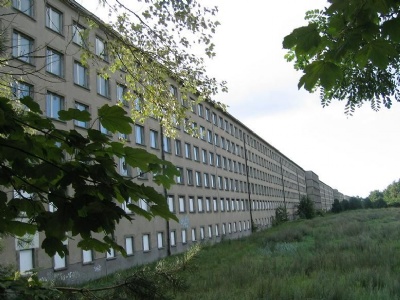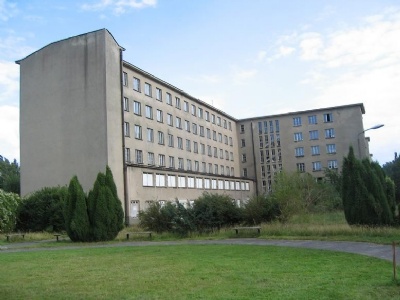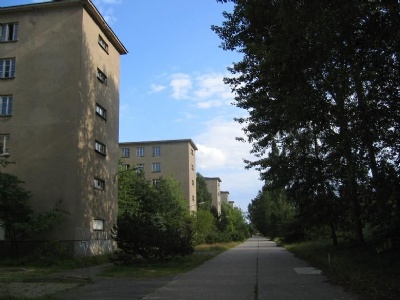Prora
When the trade unions and employers’ organisations were banned in the summer of 1933, they were replaced by something called the Deutsche Arbeitsfront, DAF (German front). Its leader Dr. Robert Ley is said to have received the following call from Hitler in April 1933. ”You (we) are to take over the trade unions so that they can no longer pose a threat to us and turn the workers into one great community without class boundaries”. Hitler understood how important it was to overcome unemployment and thereby gain the support of the workers. To further strengthen the ties between the Nazi party and the labor movement, DAF founded something called, Kraft durch Freude, KdF (Strengthening through joy).
KdF arranged everything from courses, excursions and trips, including cruises to Madeira, Norway and other exotic places for that time. The cruises took place on Kdf’s own ships such as Wilhelm Gustloff and Robert Ley. In addition, large holiday facilities were to be built for the workers, and the largest was Prora on the Rügen peninsula. Here the worker and his family would be offered a paid holiday as a reward for their work. With such social policy programs at a time when unemployment was largely non-existent and people felt things had turned for the better, there were few who missed the trade union movement.
Prora was a gigantic building project and it came to employ about 9000 workers. Construction began in 1936 and covered an area of more than four kilometres and about 150 metres from the Baltic coast. Prora consists of eight identical buildings with six floors each, all rooms had a view of the sea and the facility was built to accommodate about 20,000 guests. A large festival hall was also planned, with space for all 20,000 guests, two indoor pools with artificial waves, a cinema hall and a large port for arriving passenger ships.
In other words, Prora was meant to be a luxurious holiday resort of the time. But when the war broke out in September 1939, construction was interrupted and it was never completed and even less used for its purpose. During the war, parts of Prora were used for military training and at the end of the war a small hospital was established. Although Prora was never completed, Prora is the largest Nazi construction project to be realized.
Current status: Preserved with museum (2007).
Address: Objektstrasse 1, 18609 Binz.
Get there: Car.
Follow up in books: Smelser, Ronald: Robert Ley: Hitler’s Labor Leader (1992).




Like Auschwitz, Prora was also part of Nazism but with a completely different purpose. What they both had in common was that they were established from a racist point of view. In Auschwitz, inferior races would be exterminated while in Prora, the race the Nazis cherished would be rewarded. If we are clear about this, Prora cannot be used as a counterweight to, for example, Auschwitz to show a ”good side” of Nazism. If, however, we repress Prora because. that there was none of what happened in the concentration camps, we risk turning it into something mysterious and sensitive, and then we open up to what we want to prevent, risking that Prora becomes a symbol of Nazism’s ”good side”.